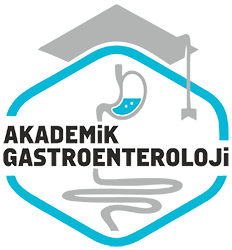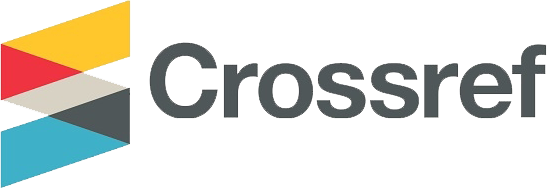Aralik 2020
Endoskopik retrograd kolanjiyopankreatografinin endikasyonlari, sonuçlari ve komplikasyonlari: Dogu Karadeniz’deki üçüncü basamak bir merkezin 3 yillik verileri
Indications, results, and complications of endoscopic retrograde cholangiopancreatography: 3-year data of a third-level center in the Eastern Black Sea Region
- Ana Sayfa
- Sayılar
- Aralik 2020
- Endoskopik retrograd kolanjiyopankreatografinin endikasyonlari, sonuçlari ve komplikasyonlari: Dogu Karadeniz’deki üçüncü basamak bir merkezin 3 yilli...
Özet
Giriş ve Amaç: Bu çalışmanın amacı merkezimizde yapılan endoskopik retrograd kolanjiyopankreatografi islemlerinin endikasyon, teknik basari ve sonuçlarını gözden geçirmektir. Gereç ve Yöntem: Karadeniz Teknik Üniversitesi Tıp Fakültesi Hastanesi, endoskopi ünitesinde Subat 2017- Subat 2020 tarihleri arasında endoskopik retrograd kolanjiyo-pankreatografi yapılan ardışık 524 hastanın sonuçları retrospektif ola-rak değerlendirildi. Her prosedürden önce hastalardan resmi yazili onay alındı. Bulgular: Çalışmamızda 524 hastaya toplam 620 endoskopik retrograd kolanjiyopankreatografi islemi gerçekleştirilmiştir. Hastaların 285’i (%54.3) kadın, 239’u (%45.6) erkek olup yaş ortalamasi 64.5 (18-103) idi. Hastaların %97.8’inde endoskopik retrograd kolanjiyopankre-atografi terapötik amaçla yapildi. En sık endikasyon koledokolitiyazis (%68.5) ve safra yollarinda dilatasyon ve kolestaz bulgularının olmasi (%20.8) idi. Hastaların 506’sında (%96.6) basarili selektif koledok kanü-lasyonu saglandi ve bunlarin 32’sinde (%7.8) igne uçlu sfinkterotom ile ön kesi yapildi. En sık tespit edilen bulgular koledokolitiyazis (%61.8), koledok dilatasyonu veya benign biliyer stenoz (%12.2) ve malign biliyer stenoz (%8.0) idi. En sık yapılan terapötik islemler endoskopik sfinkte-rotomi 450 (%85.8), balon veya basket ile tas çikarma 263 (%50.2) ve stent yerlestirilmesi 158 (%30.2) idi. Genel komplikasyon orani %4.9 olup En sık görüleni %2.3 ile pankreatit idi. Serimizde 2 hastada (%0.4) mortalite gelisti. Sonuç: Endoskopik retrograd kolanjiyopankreatografi ciddi komplikasyon riski tasimasina ragmen uygun endikasyonda yapil-diginda pankreatobiliyer hastalıkların tedavisinde etkili ve güvenli bir yöntemdir. Endoskopik retrograd kolanjiyopankreatografi ilişkili morbi-dite ve mortaliteyi azaltmak için olasi komplikasyonlarin erken tanısı ve uygun yönetimi çok önemlidir.
Abstract
Background and Aims: The aim of this study was to review the indi-cations, technical success, and results of endoscopic retrograde cholan-giopancreatography in our center. Materials and Methods: The results of 524 patients who underwent consecutive endoscopic retrograde chol-angiopancreatography between February 2017 and February 2020 in the endoscopy unit of Karadeniz Technical University, Faculty of Medicine, were evaluated retrospectively. Formal written consent was obtained from all patients prior to each procedure. Results: A total of 620 en-doscopic retrograde cholangiopancreatography procedures were per-formed in 524 patients. Two hundred eighty five of the patients (54.3%) were female and 239 (45.6%) male, with an average age of 64.5 (18–103). In 97.8% of the patients, endoscopic retrograde cholangiopancrea-tography was conducted for therapeutic purposes. Choledocholithiasis (68.5%) and dilatation and cholestasis findings in the biliary tract (20.8%) were the most common endoscopic retrograde cholangiopancreatogra-phy indications. Successful selective common bile duct cannulation was achieved in 506 of the patients (96.6%), and precut sphincterotomy with needle knife sphincterotomy was performed in 32 (7.8%) of them. The most common findings were choledocholithiasis (61.8%), common bile duct dilatation, or benign (12.2%) and malignant (8.0%) biliary stenosis. On the other hand, the most common therapeutic procedures were en-doscopic sphincterotomy in 450 patients (85.8%), stone extraction with balloon or basket in 263 (50.2%), and stent placement in 158 (30.2%). The overall complication rate was 4.9%, and the most frequent compli-cation was pancreatitis with a rate of 2.3%. In this series, two patients (0.4%) died. Conclusion: Despite the possibility of severe complications, endoscopic retrograde cholangiopancreatography is an efficient and safe procedure for the treatment of pancreaticobiliary diseases when done with appropriate indications. Early diagnosis and effective treatment of potential complications are very important to reduce endoscopic retro-grade cholangiopancreatography related morbidity and mortality



